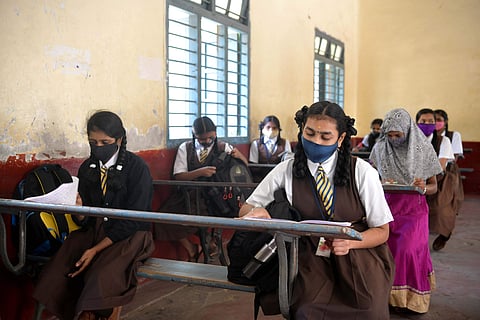

The total strength in the number of students in government, government-aided and non-private schools of Assam has gone up by over 63,000 since September 2020, as disclosed by official data.
It was the Education Department who collated enrollment numbers of Classes I to XII students and they found that despite apprehensions regarding dropouts during the pandemic, the number has gone up, stated a report in PTI.
As per the datasheet, which is available with PTI, from 56,21,203 in September 2020, the grand total of students in government, government-aided, tea garden-managed and venture (established by residents of a locality) has gone up to 56,84,487 in November 2021. The increase is of 63,284 students and the growth in total enrolments is pegged at 1.13 per cent.
It is in the elementary section, Classes I to VIII, that the enrollments have been the highest of all in non-private schools of Assam, with 44,92,085 students in September 2020 which went up to 45,64,182 in November 2021. Growth of 27,211 enrollments, up from 3,17,446 to 3,44,657, has been noted in higher secondary schools, that is, Classes XI to XII.
It is the secondary schools, Classes IX and X, that saw a decline in numbers. It went from 8,11,672 students in September 2020 to 7,75,648 in November last year, recording a decrease of 36,024. Classes V, VI, IX and XII saw a drop in student enrollments, the data reflected.
Roshni Aparanji, Director, Axom Sarba Siksha Abhiyan, told PTI that the government had taken many initiatives to help bump up the enrollment rate which included giving admissions to new students and endeavouring to bring back those students who had dropped out. Attendance monitoring systems were strengthened for students and teachers plus local resource groups helped maintain quality in schools.
"We carried out an extensive enrollment drive, which showed positive results. Other steps such as hostel facilities in schools, free uniform and books, nutritious meals at the elementary level, scholarships, mentoring of students and engaging qualified teachers also helped," she added.
"We involved various NGOs and constantly worked on creating awareness among parents, guardians and communities to send their children to schools. During the pandemic, we also changed the school timings as per the children's convenience," she said.
A social worker, who has worked in the children's education field along with the government, shared that from private schools, many parents from low-income groups shifted their children to government schools during the course of the ongoing pandemic.
"These low-income households were shattered due to the pandemic. Many of them could not afford to pay the high fees of private schools. That is also a big reason for more enrollments in government schools," he said, on the condition of anonymity.
